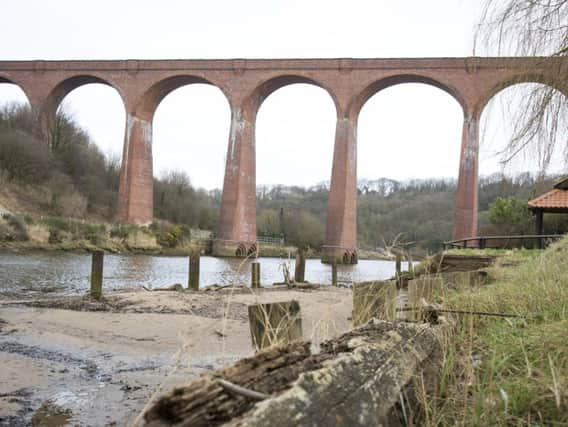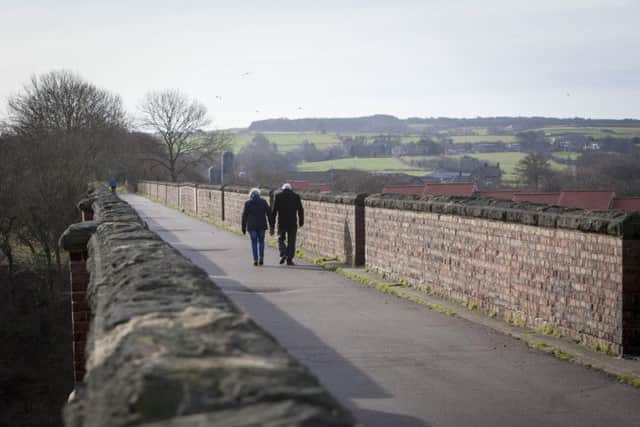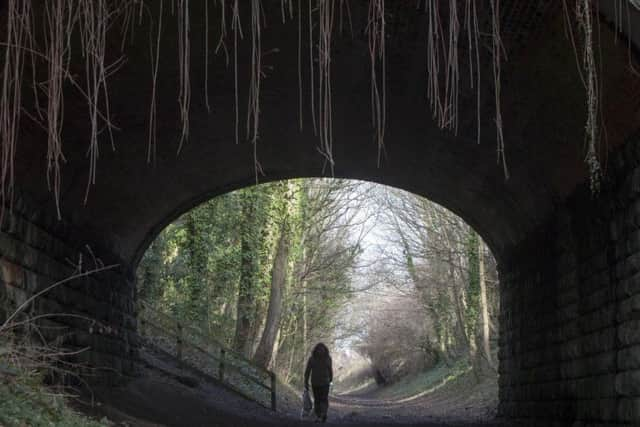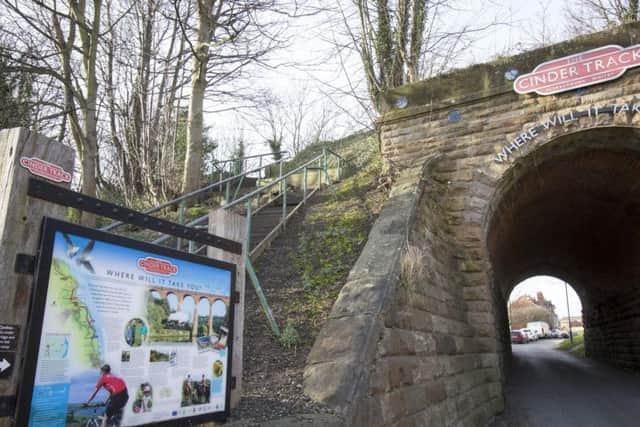Why the Cinder Track is a red hot favourite


The stunning 21-mile-long route takes in a whole host of views on the former railway journey between Whitby and Scarborough.
The overarching, encroaching woodland looks as though it has been plucked straight from a scene in the Lord of the Rings films.
Advertisement
Hide AdAdvertisement
Hide AdMeanwhile, the views provided by structures like the Larpool viaduct provide a reminder of the bygone railway heritage.


But how did this marvel turn from a popular railway route on the coast, to a prominent walking and cycling route?
The track operated as a railway from July 1885, until its closure in March 1965 – bringing to an end one of the most scenic railway lines in the country.
In that time the line proved extremely popular with holidaymakers, offering an accessible route between the tourism-magnet towns.
Advertisement
Hide AdAdvertisement
Hide AdA guide issued in 1897 described the route and its appeal: “The line runs through pleasant undulating pasture lands at either end, winds in and out amongst gorse and heather-clad hills, dips into wooded dales, skirts the edge of a wild moor, climbs the highest cliff on the Yorkshire coast, runs round one of the bonniest bays in the Kingdom, and over a portion of its course is perched on the brow of a cliff against which the waves ceaselessly break.


“In the short 20 miles it covers there is endless variety of wild and picturesque scenery.”
The early years of the track began with problems. It took 13 years to build, with the construction stalling in the 1870s amid funding problems.
It took until 1879 for new efforts to come forth in a bid to complete the project, with an Act granted in August 1880 reviving powers for completion of the railway.
Advertisement
Hide AdAdvertisement
Hide AdSir Charles Fox and Son of Westminster were appointed as engineers of the line, while the builders were John Waddell and Son, the same builders behind the Whitby, Redcar and Middlesbrough Railway.


On its opening day, extra trains had to run to cope with the extensive demand.
Many passengers opted to travel a short distance to their neighbouring station, rather than making the full journey.
The name of the track derives from the composition of the foundations.
Advertisement
Hide AdAdvertisement
Hide AdCinder is a by-product of coal that has burned or partly burned, but not reduced to ashes. It is therefore incapable of further combustion.


The present-day walking route never strays more than a mile or so from the sea and provides some stunning views. It was bought by the borough council shortly after the railway closed and was later turned into a popular walking route.
From Whitby the track passes through eight former stations before reaching Scarborough.
Perhaps the jewel in the crown of the modern-day track is the Larpool viaduct, a 915-foot long bridge, which stands 125 feet from the river bed at its highest point.
Advertisement
Hide AdAdvertisement
Hide AdConstruction on the viaduct began in October 1882 and took almost two years to complete.
According to Alan Whitworth’s book Esk Valley Railway Through Time, the structure is supported on 12 piers, by 13 arches, with an average span of 60 feet.
It is estimated that the viaduct contains as many as five million red bricks.


The views from the top of the structure provide a breathtaking look towards Ruswarp, Sneaton and the moors beyond.
Advertisement
Hide AdAdvertisement
Hide AdWhitby was the first coastal town in Yorkshire to be connected to the railway map.
It appeared at an early stage during the formation of the Whitby to Pickering Railway in 1836.
The town had a long tradition of key industries at the time, including alum quarries, whaling and shipbuilding.
But the nature of the surrounding geography meant that Whitby was isolated and in need of better transport links if the economy was to progress beyond that of maritime industries.
Advertisement
Hide AdAdvertisement
Hide AdA meeting between local businessmen in The Angel Inn in 1831 – the modern-day Wetherspoons – concluded that trade would improve by improving transport links.
The railway later became part of George Hudson’s York and North Midland empire.
West Cliff station in Whitby wasn’t introduced until some years later.
It originally formed part of the Whitby, Redcar and Middlesbrough Union Railway in 1883, before later becoming a stop on the Scarborough and Whitby Railway.
Do you remember the Whitby to Scarborough Railway? Did you travel on it? Share your memories and stories of the Cinder Track: call (01947) 829914 or email: [email protected]